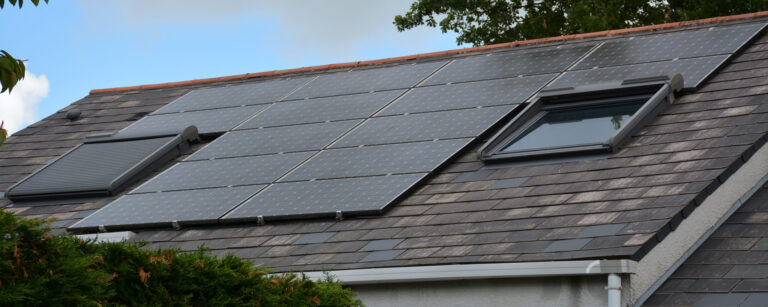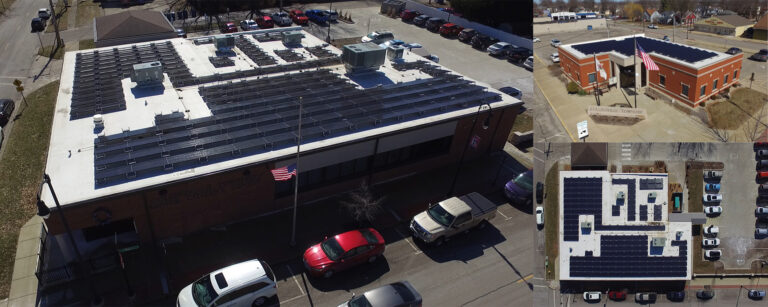Solar Can Cool My Home?
Solar does more than make electricity. A rooftop array shades the roof and slows heat from the sun before it can reach your attic and living space. Multiple studies show a real cooling effect when panels are mounted with an air gap that lets wind move under the array.
Quick Takeaways
- Panels act like a shade canopy and reduce the amount of heat that reaches the roof. UC San Diego measured about 38% less heat hitting the roof under panels.
- The same study saw ceilings about 5°F cooler under the panel during the day.
- Over a year, modeling showed a 38% reduction in cooling load through the roof section with PV, or about 5.9 kWh per square meter saved on cooling.
- The effect is stronger with tilted modules and a clear air gap for ventilation.
How The Cooling Works
- Shade: Panels absorb and convert a portion of solar energy that would have hit your shingles. Less solar radiation reaches the roofs surface.
- Ventilation: The space between modules and roof lets wind carry away heat. Tilted arrays usually cool better than flush mounts because air moves more freely.
- Thermal Buffering: The array reduces temperature swings on the roof deck. That steadier temperature can ease stress on roofing materials and insulation over time.
What The Research Says
UC San Diego’s field measurements used thermal imaging on a building with both tilted and flush arrays. Compared with bare roof sections, the ceiling below panels was about 5°F cooler in daytime. The team estimated the roof under panels saw roughly 38% less heat flux. They also noted a small winter tradeoff, where panels block daytime sun but help retain heat at night, which tends to balance out.
A companion analysis in the journal Solar Energy found a 38% reduction in annual cooling load through the roof covered by PV, equal to about 5.9 kWh per square meter each year. For many buildings, the passive cooling is similar to getting about a 5% price discount on the array over its life due to lower AC use. Actual results vary by roof type, climate, and ventilation under the array.
What Affects Results On A Home
- Mounting height and tilt. More standoff and a slight tilt encourage airflow and improve convective cooling.
- Roof color and material. Dark, heat-absorbing roofs see larger benefits from shade than highly reflective ‘cool roofs.’ UCSD notes reflective membranes are still very effective on their own.
- Attic insulation and ventilation. Good insulation and proper attic venting work with solar shade to lower peak attic temps and AC load.
- Climate. Hot, sunny markets benefit most from reduced solar heat gain. Winter impacts are usually minimal since nighttime heat retention offsets daytime shading on heating needs.
Attic Heat and Your AC
Lower roof heat gain means less attic heat buildup in the afternoon. That reduces the temperature difference across your ceiling insulation and can trim AC runtime during peak hours. The exact savings depend on array design, attic R-value, and your thermostat habits. The science is clear on direction of impact even if the percentage varies home to home.
FAQS
Do panels make the house colder in the winter?
• Not really. Panels can block some passive solar heating during the day, but they also help retain warmth at night. In the UC San Diego work, those effects largely cancelled out for heating.
Is this the same as a cool roof?
No. A cool roof reflects sunlight from the surface itself. Solar shades the roof and creates an air buffer. You can combine both for maximum effect, but if you plan to go solar, the array provides real shading benefits on its own.
Will a flush mounted system still help?
Yes, although a tilted, ventilated array tends to perform better for cooling. Even flush arrays reduce direct sun and heat flux.



